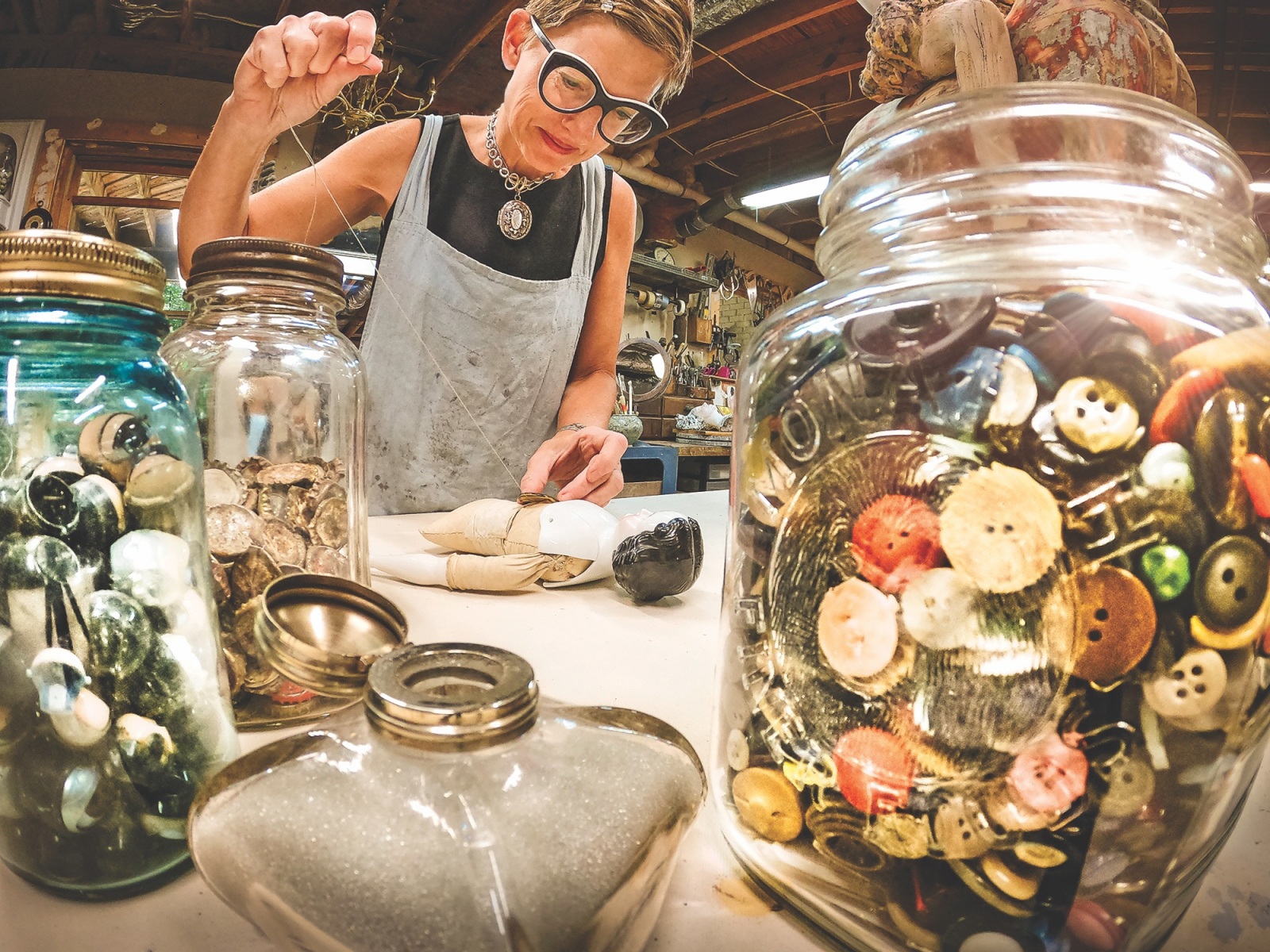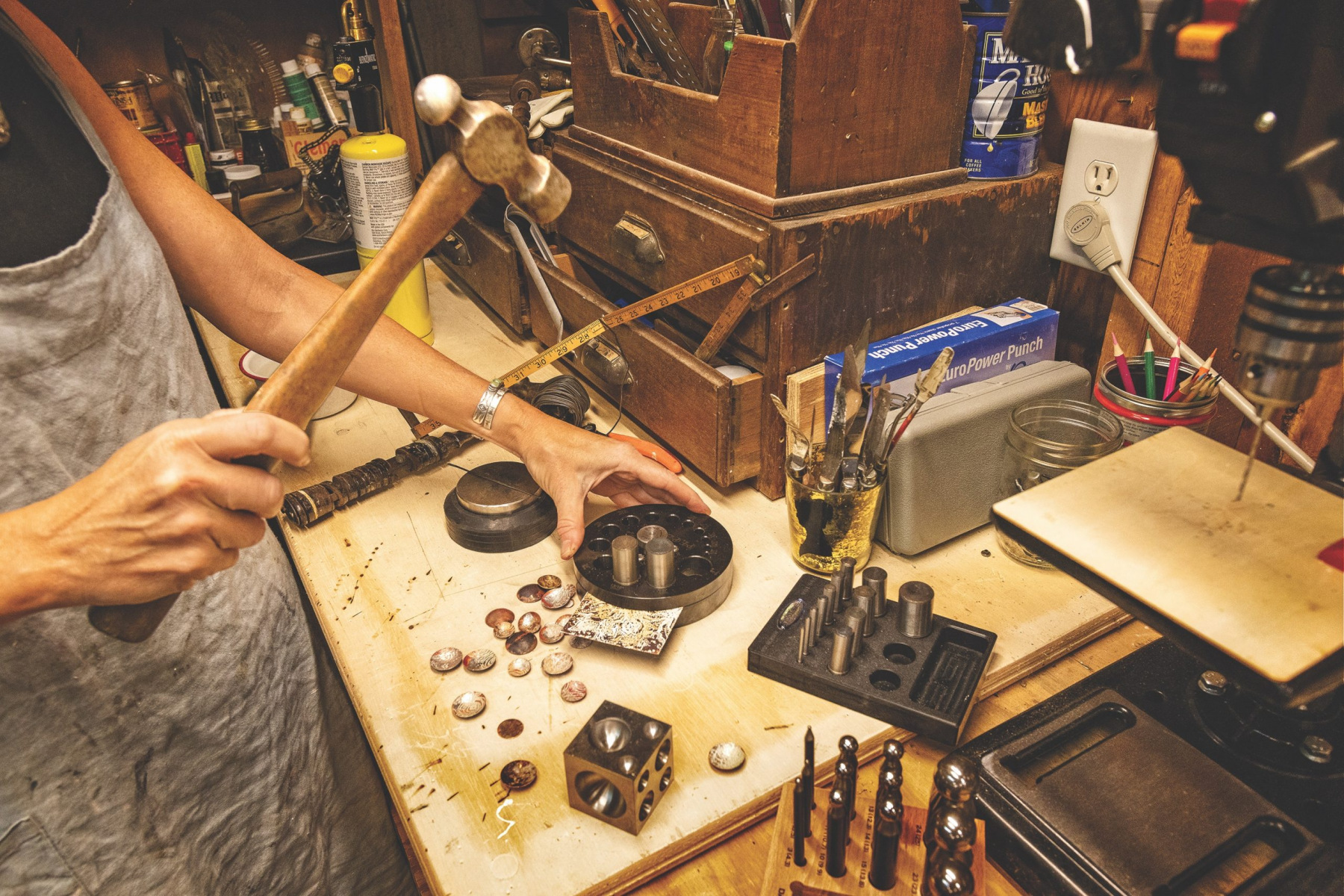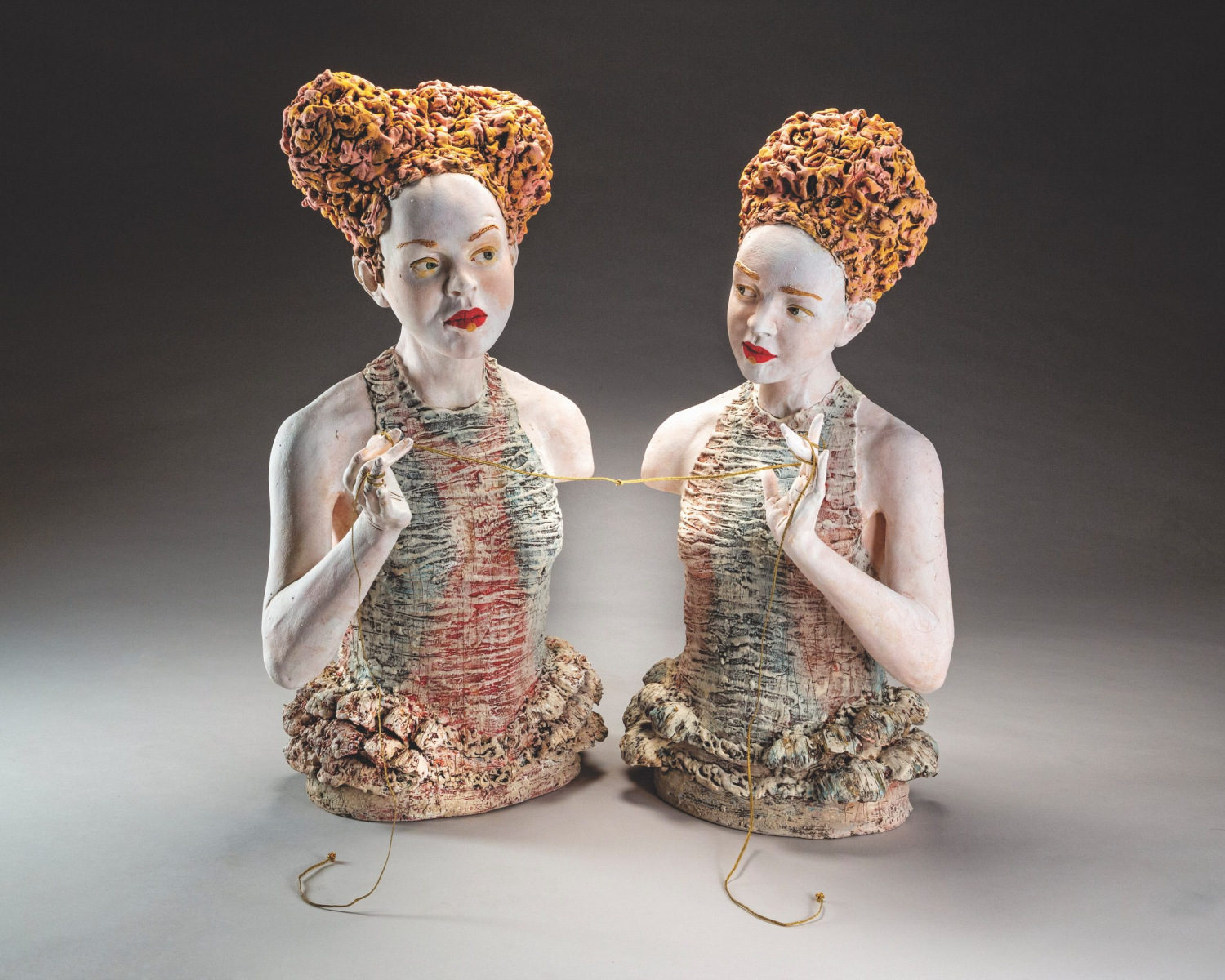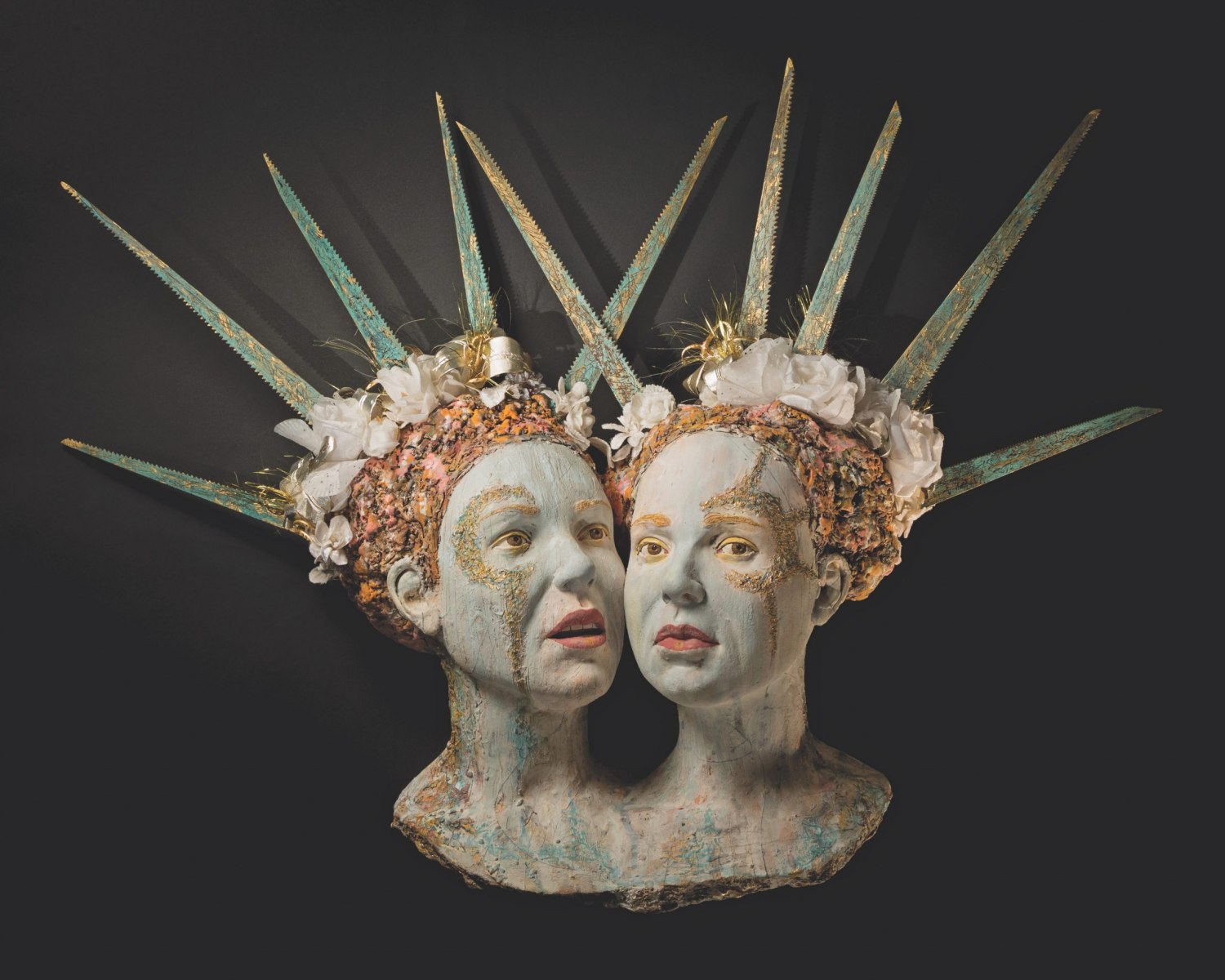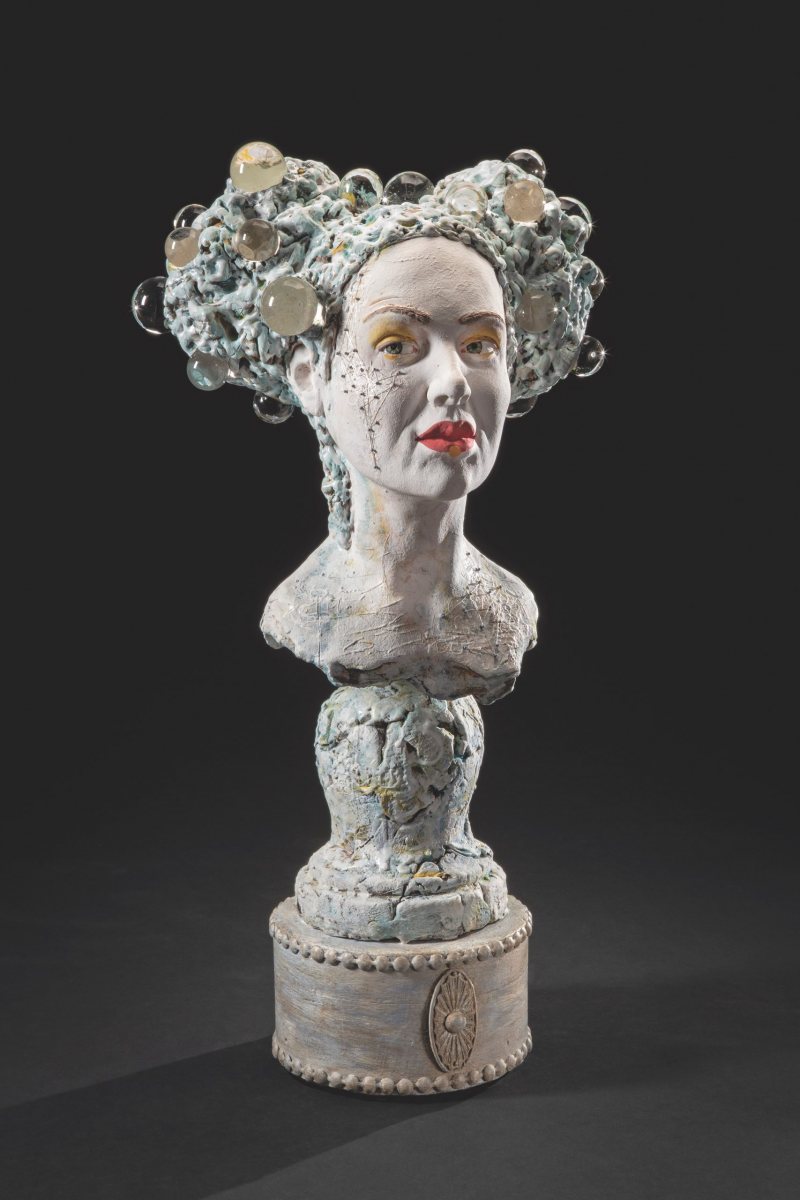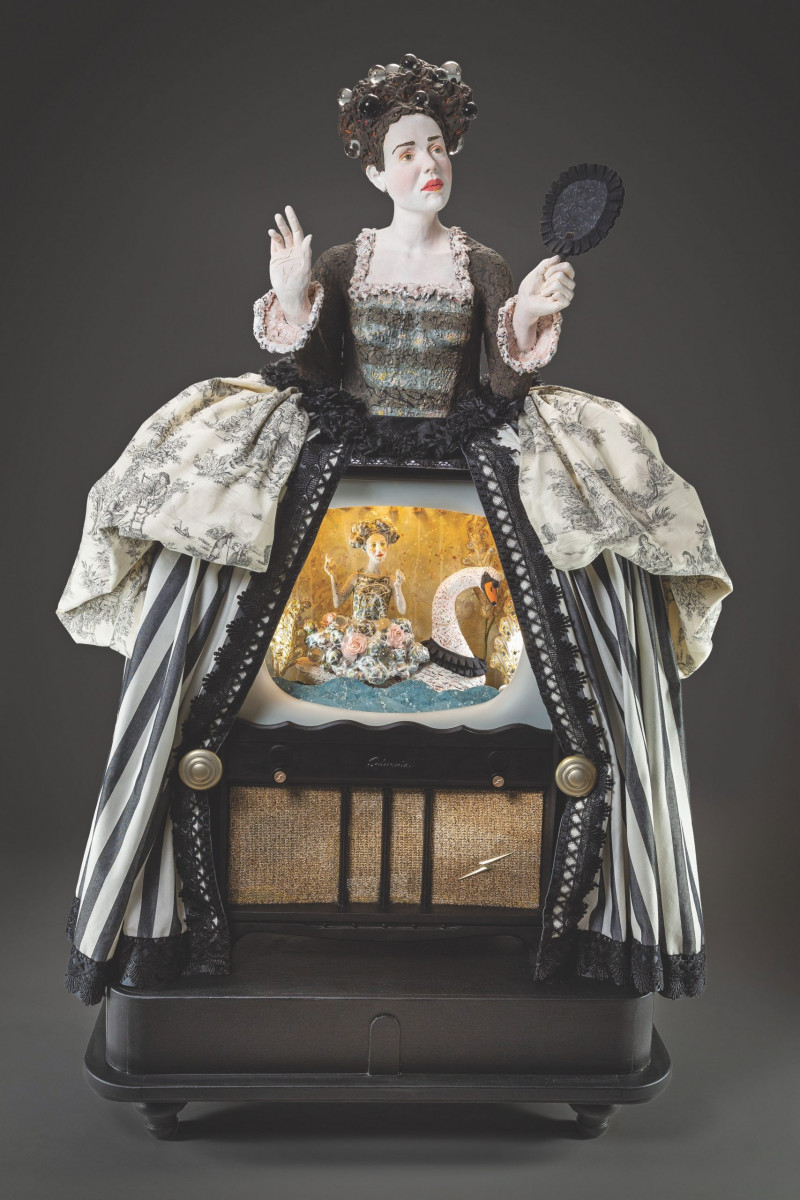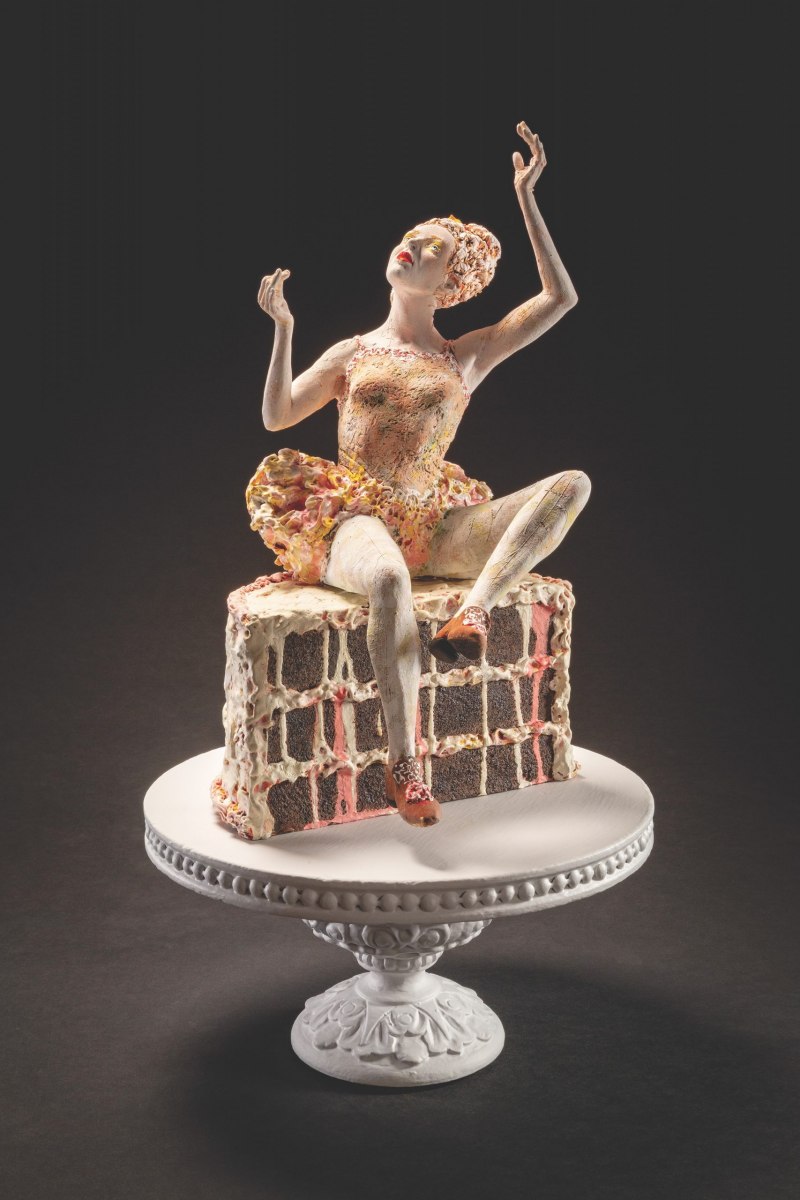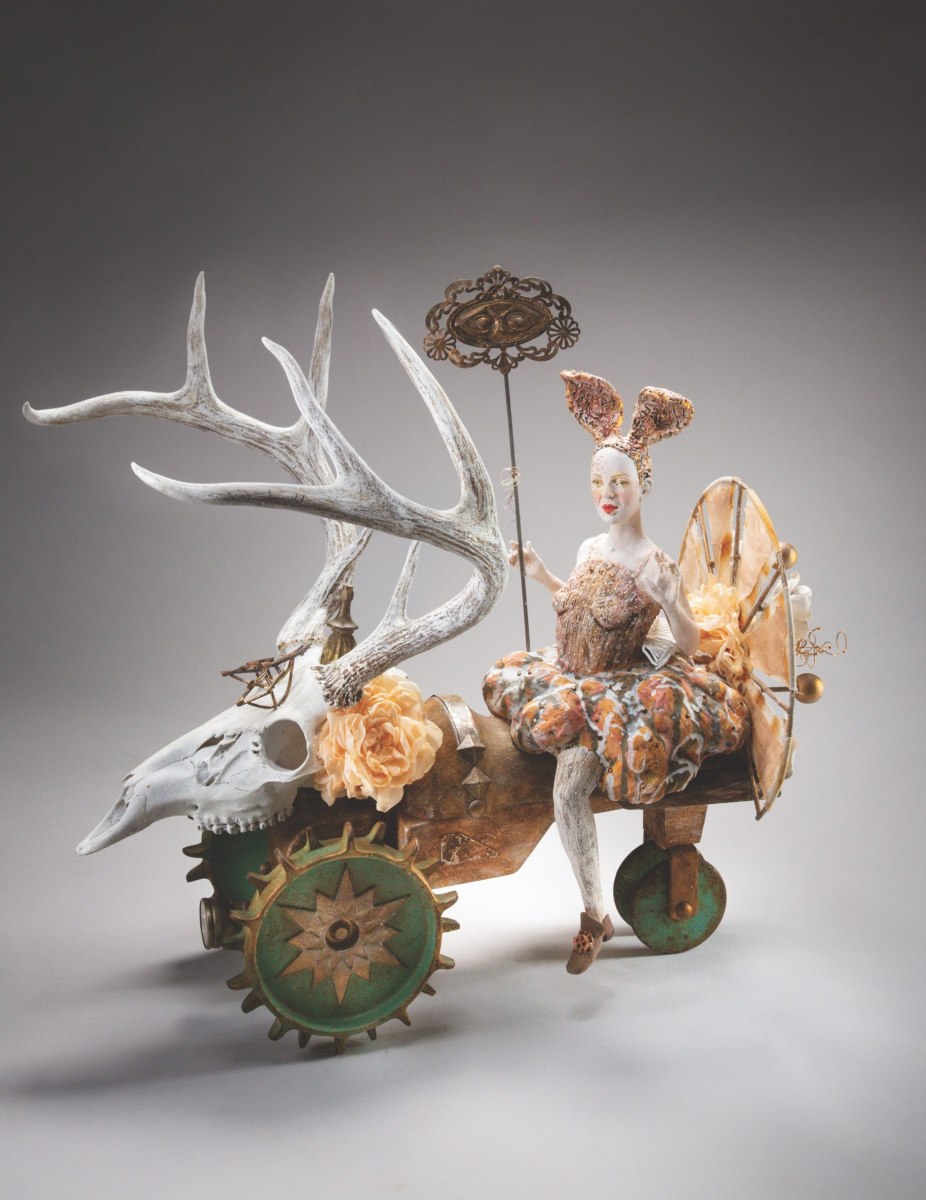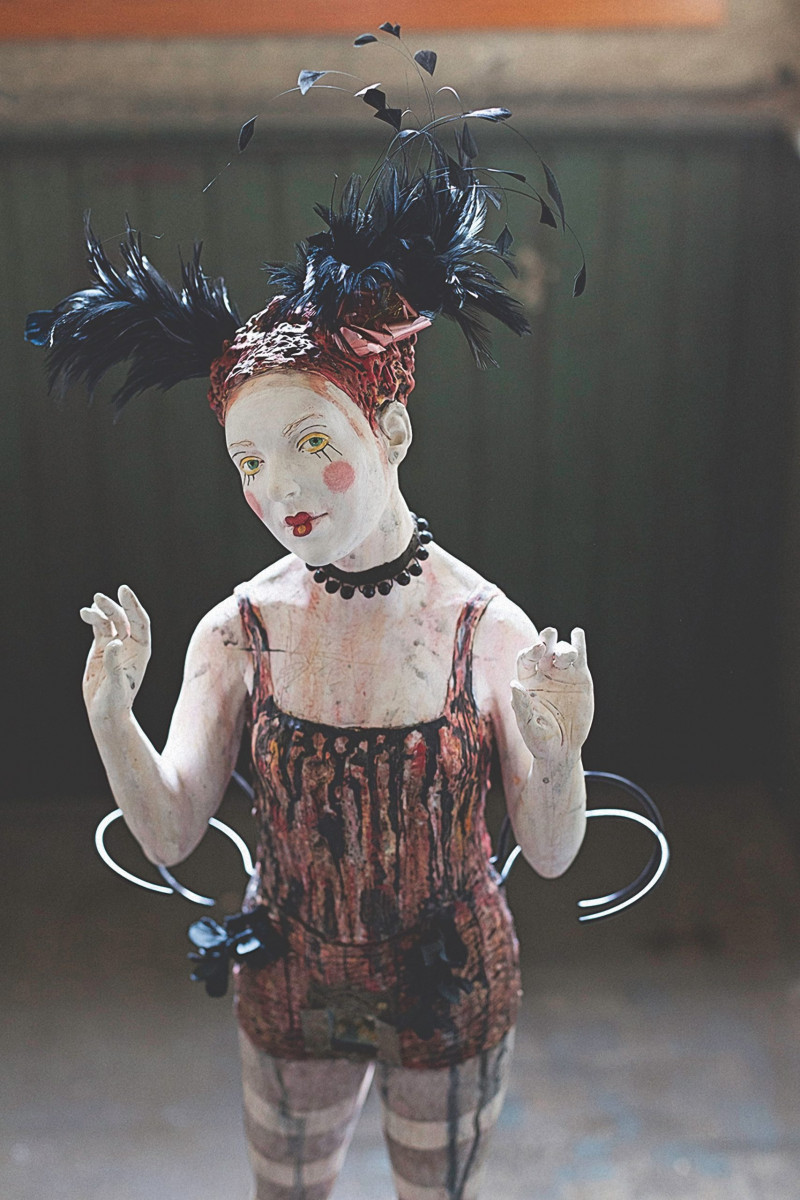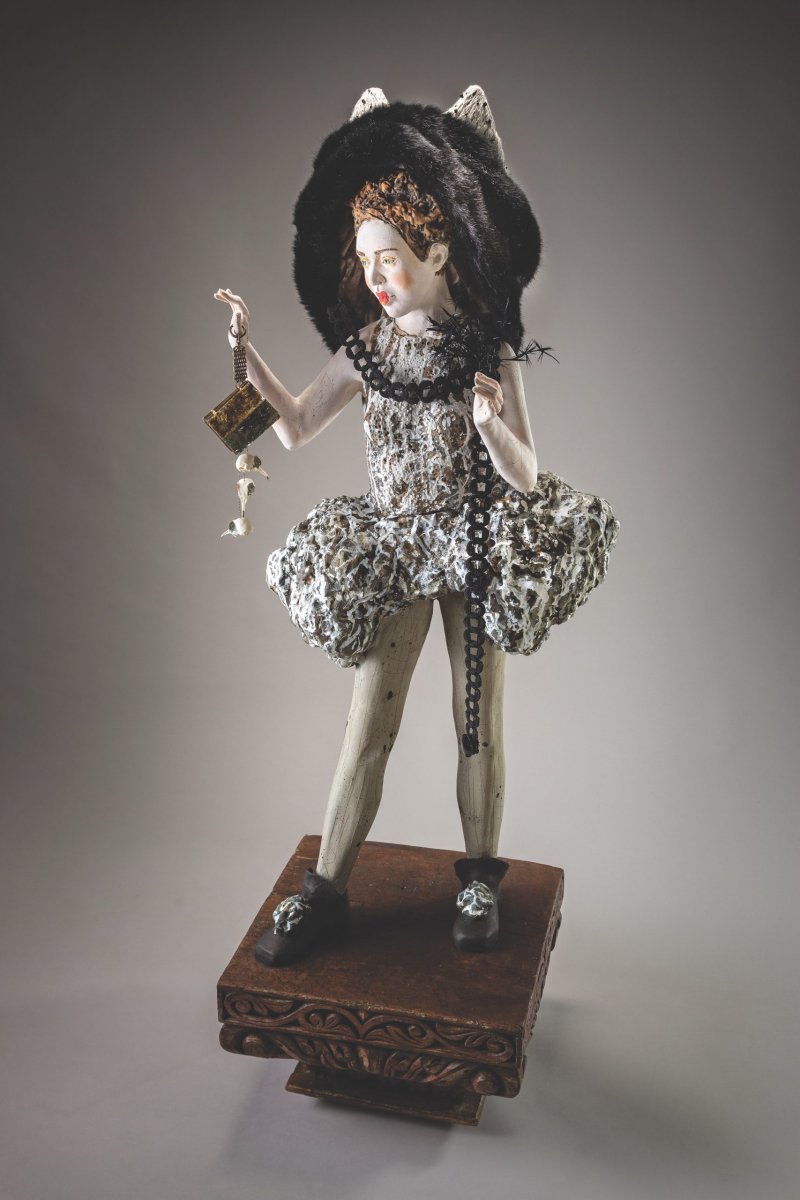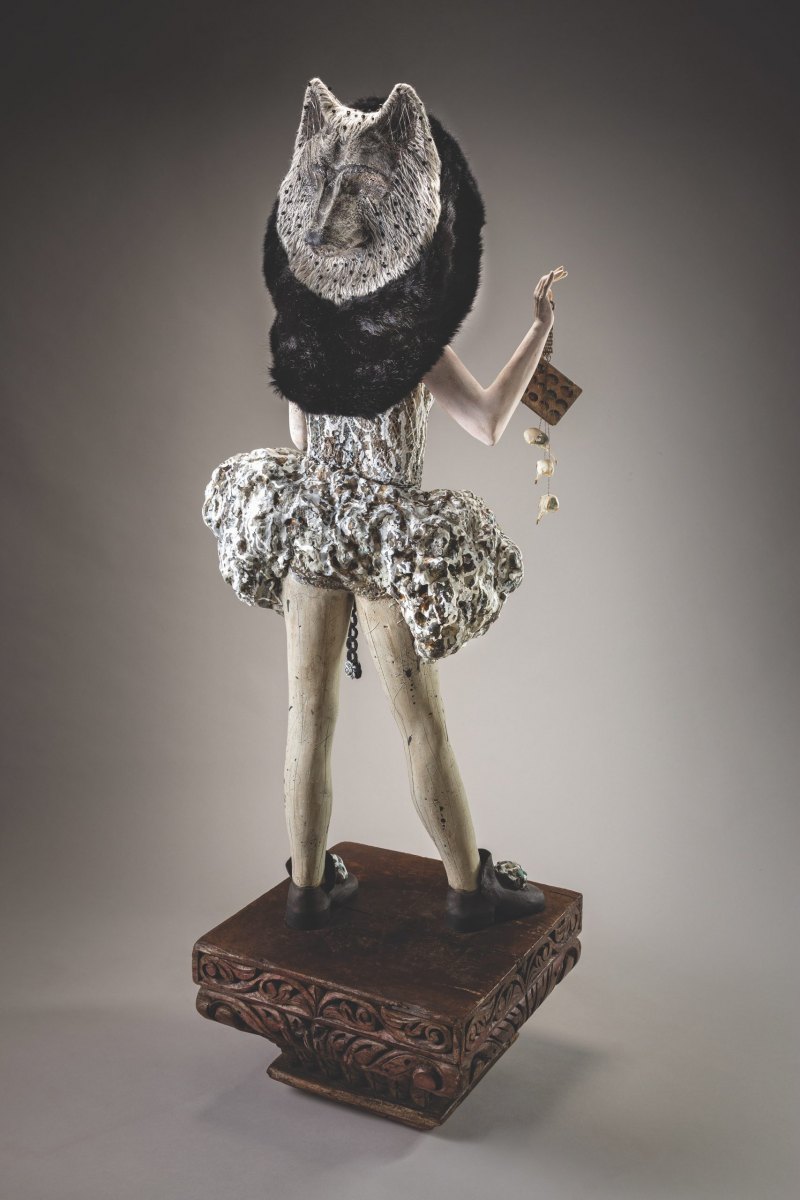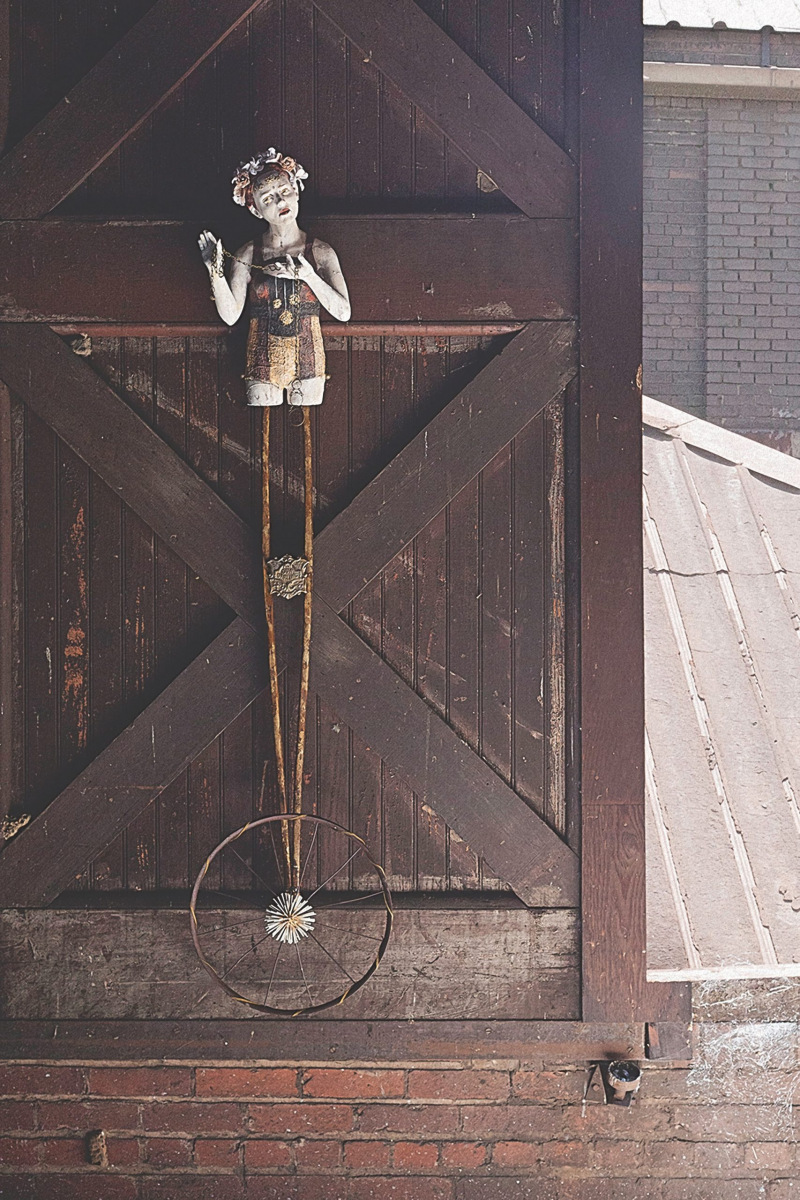Storytelling is a vital human expression.
Stories give us empathy and imagination, enabling us to understand who we are and where we come from. But, most importantly, they open our understanding to the background and experiences of others. I am a storyteller. I am a sculptor of stories.
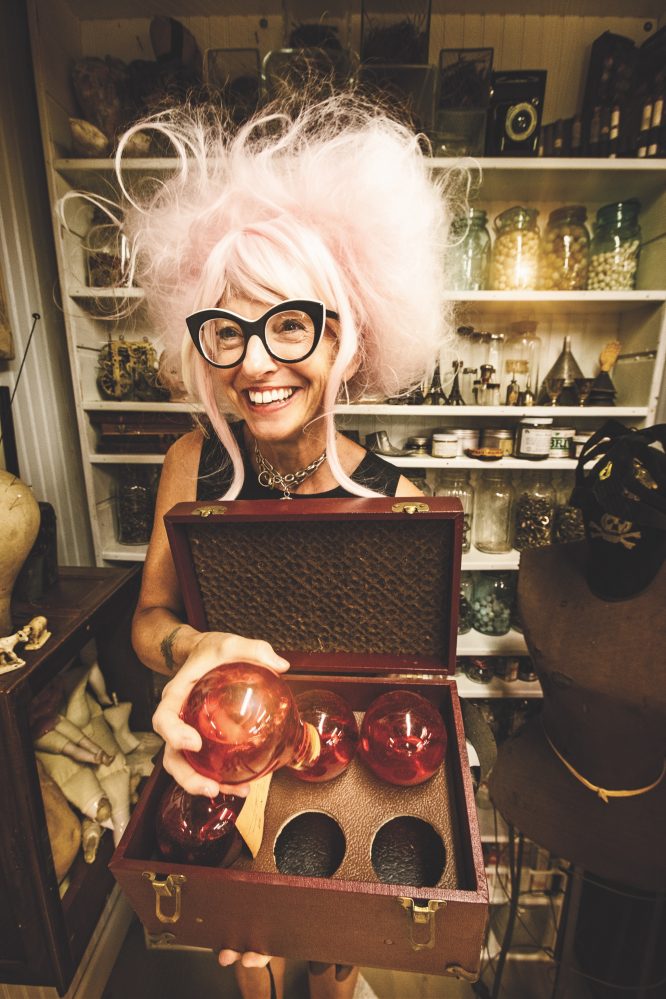
When I look back through my circuitous path to a career as a studio artist and teacher, I realize that the through-line has always been the power of the story. My background in theater taught me the transcendent quality of storytelling through performance and the vast array of elements that can be narratively harnessed to convey a message or mood. This was my introduction to the potential of collaboration.
I yearned to contribute to the human dialogue, and I believed a more direct way to be a part of something larger would be to pursue public policy. That detour took me to New York City. While this seems like a vastly different path, what hooked me every time was the persuasive power of storytelling. In New York City, I was part of a research team that collected experiences in documenting the transition from welfare to work. Rather than expressing our findings through numbers and percentages, we were able to convey the issues through the participants’ own voices.
While I was proud to help give voice to the voiceless, I wished to tell my own stories. As in theater, public policy was always about promoting another person’s narrative. I wanted to share my own imagination with the world but had no idea what my next steps would be.
Like for so many others, September 11, 2001, was a turning point that forced another detour. I realized I had one life to live and must find a way to express myself creatively. Soon after, I left public policy and started experimenting with ceramics.
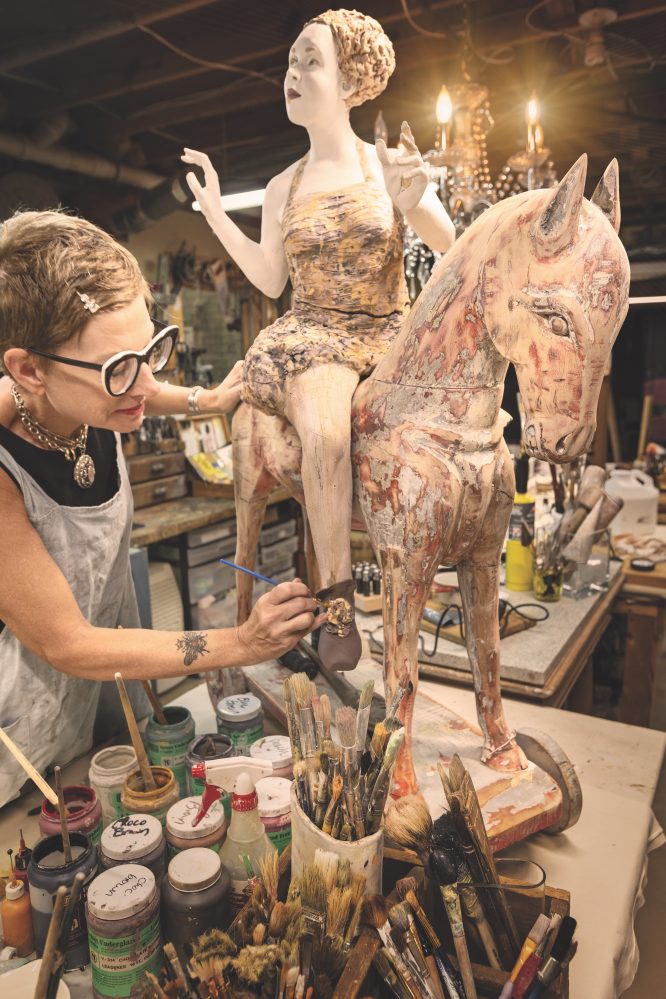
While my work is a combination of different media, the ceramic figure is the main character and soul of the story. These figures are stylized but relatable, as if they came from the same surreal, fantastical world. All my characters are hand-built porcelain stoneware. The process of hand-building is grounding and allows me to have a direct hand in creating the narrative. As in theater, gesture and expression are the powerhouses of the story and I focus a great deal of time on these aspects. (In fact, in order to achieve the fine details in the face and hands, my main tools are a scalpel and a straight pin.) The figures have an open expression and gesture in which they confront the world they live in with wonder. These stories are about being the heroine of one’s journey.
The figures are then painted with 10-15 layers of ceramic finishes (underglazes, slips, stains, and glazes). The layers of color and texture represent the qualities that individually define us and hint to the character’s journey and experiences. Once they are fired in the kiln, the next step is incorporating mixed media and relics into a seamless whole.
As I evolved in ceramics, the creative voice from my youth resurfaced. In childhood I loved to take old broken things and transform them into something new. I had plenty of material to work with since my dad never threw away anything that could be repurposed or reused. I would spend hours rummaging through his hardware drawers, glass jars, and coffee tins full of bits and pieces that he had saved. I especially loved the old, orphaned items he had collected, such as a small leather coin purse, glass medicine vial, a stone marble, or a doll glove. I would wonder about the life attached to these items and what they had experienced—a storyteller’s goldmine! Could the small glove become a flag pointing to the start of a new expedition? Could the old tin become a vehicle transporting hidden treasures? This vocabulary eventually found its way into my sculptural work.
I am constantly incorporating new materials and techniques to create a richer narrative. Experimenting with different ways to use fiber, paper and book arts, metal work, etc., has brought play back into the studio, just like when I was a child. I don’t expect to be a master of every medium, but rather to learn something new that I can uniquely include in my work. Sometimes the number of different media projects I have in the studio at one time is dizzyingly chaotic—but fun can be messy! These new techniques help me to blend the found objects and ceramic work into a cohesive whole and surprise the viewer with hidden details that add to the story, such as a hand-embroidered phrase on the inside hem of a skirt or books that turn into a story box.
People often ask what inspires my work? Do I dream them up in isolation or are they inspired by the found objects I incorporate?
The answer is both. When I began my figurative work, the found objects were the foundation for each piece. However, as I grew more confident, I challenged myself to start building in clay and see where the story would take me. At first it was difficult to come to the worktable without a clear plan. I referred to it as free falling. But this approach helped me to trust the process and my voice.
The ongoing challenge of my work is transposing what is achieved most easily through prose or performance and breaking the sculptural “fourth wall” that separates the viewer and narrative. I want to encourage a dialogue with my sculptures to help the viewer better identify with the story. For example, the typical sculptural presentation of work on a pedestal can create an artificial formality that heightens its preciousness as an object and isolates it from the world in which it exists. One way to invite the viewer down my narrative rabbit hole is to build larger installation pieces. Because these works are life-sized, the idea of the “object” is removed, and the viewer can be transported into their world. Another fun way for me to extend the narrative world is to dress up as a character for exhibition openings. The pink hair is a great conversation starter and a way to “live in their world” for a while.
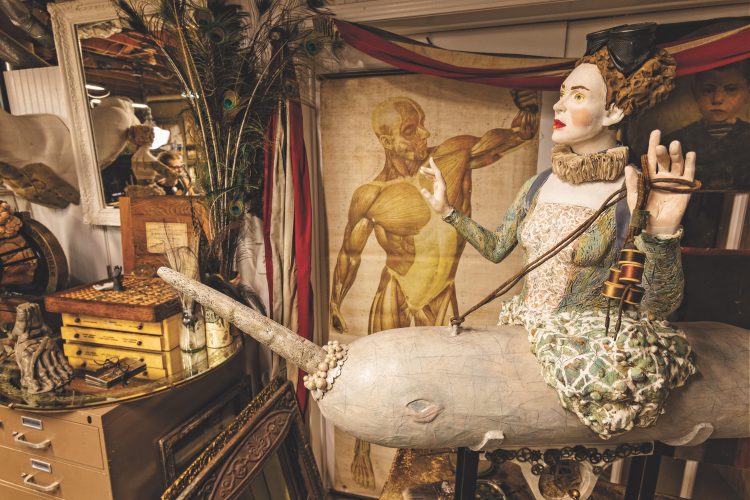
Collaborations are another way to expand my storytelling vocabulary, giving me tools of expression I would not normally have. Working with photographers in a natural environment has allowed me to create a backdrop for each piece that expands the storytelling potential. Abandoned dwellings are my favorite setting because of the range of contrasts and emotions they evoke. The settings are recognizable but distorted; haunting but beautiful; forgotten but remembered; decaying but ethereal.
In 2018, I had the opportunity to create an immersive experience in collaboration with Italian actress and writer, Alessandra Mosca Amapola, on a project entitled “LIMBO.” This project explored the landscapes of the mind and mental illness using the stage, lights, costume, video, music, performance, and my works to tell a story. Inspired by the pieces I made for this project, Alessandra wrote a series of monologues and filmed a 15-minute video that included my works and environmental photographs of my work. “LIMBO” was a true collaboration in which we were synergistically inspired by each other’s work throughout the two-year process. The final exhibition was a theatrical performance at MACRO Museum of Contemporary Art in Rome, and we performed within an installation space containing my sculptural works as characters in the story.
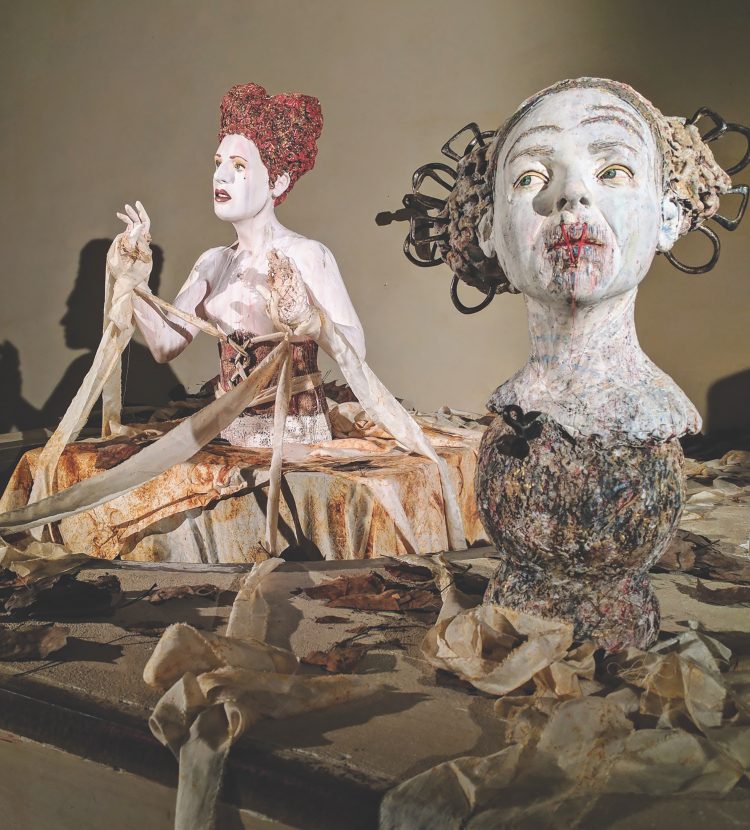
“LIMBO” has been my most complex narrative collaboration to date, but now I know the possibilities are endless. Currently I am working on a new collaboration project with the written word to add poetry and book arts as sculptural components. I have also started co-teaching domestically and internationally to bring a harmonious medley of mediums, viewpoints, and approaches to a workshop experience.
I look forward to collaborating and creating in innovative ways. There are so many more techniques to explore and stories to share. I am immensely grateful for the circuitous journey that has led me to the work I am creating.
“We are all stardust and stories.” —Erin Morgenstern, The Starless Sea
While it took me a while to find my true narrative path, all the detours have contributed to the strength of my artistic voice. In fact, I place a dot on the lower lip of each figure. This reminds me to always be true to and believe in that voice.
Storytelling is a vital human expression.
Stories give us empathy and imagination, enabling us to understand who we are and where we come from. But, most importantly, they open our understanding to the background and experiences of others. I am a storyteller. I am a sculptor of stories.

When I look back through my circuitous path to a career as a studio artist and teacher, I realize that the through-line has always been the power of the story. My background in theater taught me the transcendent quality of storytelling through performance and the vast array of elements that can be narratively harnessed to convey a message or mood. This was my introduction to the potential of collaboration.
I yearned to contribute to the human dialogue, and I believed a more direct way to be a part of something larger would be to pursue public policy. That detour took me to New York City. While this seems like a vastly different path, what hooked me every time was the persuasive power of storytelling. In New York City, I was part of a research team that collected experiences in documenting the transition from welfare to work. Rather than expressing our findings through numbers and percentages, we were able to convey the issues through the participants’ own voices.
While I was proud to help give voice to the voiceless, I wished to tell my own stories. As in theater, public policy was always about promoting another person’s narrative. I wanted to share my own imagination with the world but had no idea what my next steps would be.
Like for so many others, September 11, 2001, was a turning point that forced another detour. I realized I had one life to live and must find a way to express myself creatively. Soon after, I left public policy and started experimenting with ceramics.

While my work is a combination of different media, the ceramic figure is the main character and soul of the story. These figures are stylized but relatable, as if they came from the same surreal, fantastical world. All my characters are hand-built porcelain stoneware. The process of hand-building is grounding and allows me to have a direct hand in creating the narrative. As in theater, gesture and expression are the powerhouses of the story and I focus a great deal of time on these aspects. (In fact, in order to achieve the fine details in the face and hands, my main tools are a scalpel and a straight pin.) The figures have an open expression and gesture in which they confront the world they live in with wonder. These stories are about being the heroine of one’s journey.
The figures are then painted with 10-15 layers of ceramic finishes (underglazes, slips, stains, and glazes). The layers of color and texture represent the qualities that individually define us and hint to the character’s journey and experiences. Once they are fired in the kiln, the next step is incorporating mixed media and relics into a seamless whole.
As I evolved in ceramics, the creative voice from my youth resurfaced. In childhood I loved to take old broken things and transform them into something new. I had plenty of material to work with since my dad never threw away anything that could be repurposed or reused. I would spend hours rummaging through his hardware drawers, glass jars, and coffee tins full of bits and pieces that he had saved. I especially loved the old, orphaned items he had collected, such as a small leather coin purse, glass medicine vial, a stone marble, or a doll glove. I would wonder about the life attached to these items and what they had experienced—a storyteller’s goldmine! Could the small glove become a flag pointing to the start of a new expedition? Could the old tin become a vehicle transporting hidden treasures? This vocabulary eventually found its way into my sculptural work.
I am constantly incorporating new materials and techniques to create a richer narrative. Experimenting with different ways to use fiber, paper and book arts, metal work, etc., has brought play back into the studio, just like when I was a child. I don’t expect to be a master of every medium, but rather to learn something new that I can uniquely include in my work. Sometimes the number of different media projects I have in the studio at one time is dizzyingly chaotic—but fun can be messy! These new techniques help me to blend the found objects and ceramic work into a cohesive whole and surprise the viewer with hidden details that add to the story, such as a hand-embroidered phrase on the inside hem of a skirt or books that turn into a story box.
People often ask what inspires my work? Do I dream them up in isolation or are they inspired by the found objects I incorporate?
The answer is both. When I began my figurative work, the found objects were the foundation for each piece. However, as I grew more confident, I challenged myself to start building in clay and see where the story would take me. At first it was difficult to come to the worktable without a clear plan. I referred to it as free falling. But this approach helped me to trust the process and my voice.
The ongoing challenge of my work is transposing what is achieved most easily through prose or performance and breaking the sculptural “fourth wall” that separates the viewer and narrative. I want to encourage a dialogue with my sculptures to help the viewer better identify with the story. For example, the typical sculptural presentation of work on a pedestal can create an artificial formality that heightens its preciousness as an object and isolates it from the world in which it exists. One way to invite the viewer down my narrative rabbit hole is to build larger installation pieces. Because these works are life-sized, the idea of the “object” is removed, and the viewer can be transported into their world. Another fun way for me to extend the narrative world is to dress up as a character for exhibition openings. The pink hair is a great conversation starter and a way to “live in their world” for a while.

Collaborations are another way to expand my storytelling vocabulary, giving me tools of expression I would not normally have. Working with photographers in a natural environment has allowed me to create a backdrop for each piece that expands the storytelling potential. Abandoned dwellings are my favorite setting because of the range of contrasts and emotions they evoke. The settings are recognizable but distorted; haunting but beautiful; forgotten but remembered; decaying but ethereal.
In 2018, I had the opportunity to create an immersive experience in collaboration with Italian actress and writer, Alessandra Mosca Amapola, on a project entitled “LIMBO.” This project explored the landscapes of the mind and mental illness using the stage, lights, costume, video, music, performance, and my works to tell a story. Inspired by the pieces I made for this project, Alessandra wrote a series of monologues and filmed a 15-minute video that included my works and environmental photographs of my work. “LIMBO” was a true collaboration in which we were synergistically inspired by each other’s work throughout the two-year process. The final exhibition was a theatrical performance at MACRO Museum of Contemporary Art in Rome, and we performed within an installation space containing my sculptural works as characters in the story.

“LIMBO” has been my most complex narrative collaboration to date, but now I know the possibilities are endless. Currently I am working on a new collaboration project with the written word to add poetry and book arts as sculptural components. I have also started co-teaching domestically and internationally to bring a harmonious medley of mediums, viewpoints, and approaches to a workshop experience.
I look forward to collaborating and creating in innovative ways. There are so many more techniques to explore and stories to share. I am immensely grateful for the circuitous journey that has led me to the work I am creating.
“We are all stardust and stories.” —Erin Morgenstern, The Starless Sea
While it took me a while to find my true narrative path, all the detours have contributed to the strength of my artistic voice. In fact, I place a dot on the lower lip of each figure. This reminds me to always be true to and believe in that voice.





